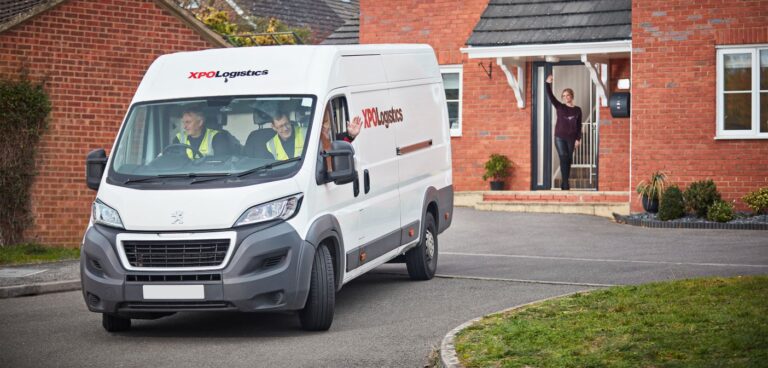Among the most significant trends in last-mile delivery is a push by transportation providers to improve the mode’s environmental impact. Here, Dan Myers, managing director – UK and Ireland, XPO Logistics, suggests that, if this prominent piece of the supply chain can become more efficient, it will reduce the impact on the environment, help companies reach their sustainability goals and improve the customer experience.
Q: How are companies making their last mile solutions more sustainable?
DM: Many companies now look at last-mile solutions with ‘planet positivity’ at the forefront of their short- and long-term planning. They’re investing in alternative fuels and charging capabilities at new sites and using alternative modes of transport for some deliveries, typically in urban areas. The industry has also seen the emergence of innovative technologies, such as predictive tools that use machine-learning and route optimisation technology that reduces fuel waste.
Due to advancements in the quality of service and delivery in last mile, customers see 3PLs as extensions of their supply chains. Using data provided by customers allows 3PLs to improve lead times, reduce costs and create solutions that function based on the environment they’re implemented in.
Q: How can companies make their last-mile fleets more sustainable?
DM: The simple answer is by investing in alternative fuel technologies and electric vehicles (EVs), in line with the UK’s ‘no new diesel’ policy timelines:
- The emissions reductions gained by alternative fuels will become very apparent over the next five to 10 years.
- The development of EV power for rigid trucks up to 26 tonnes over the next five years to 12 years potentially results in a decline in the use of alternative fuels as EV introductions rise.
- The development of EV and hydrogen power technologies for HGVs up to 44 tonnes over the next eight years to 15 years, with some purely electric models, but more likely EVs with a hydrogen fuel-cell as a range enhancer. A pure hydrogen is also an option once the tech is fully developed and tested.
Finally, there is a benefit to bringing together more volume on final-mile vehicles to reduce miles and increase delivery density. This can limit timed delivery flexibility but can optimise overall route efficiency. In addition, consumer satisfaction is linked to technology that provides the consumer with visibility over their order and choose delivery options.

Q: What advancements might we see in last-mile deliveries?
DM: It’s difficult to predict a specific technology because an innovation developed for one purpose may or may not apply to other niche models. Nevertheless, there are some clear front-runners; one is dynamic optimisation. Intelligent, dynamic planning tools can only achieve the home delivery speed that is being demanded by consumers today. These tools react to constantly changing circumstances to produce the best outcome.
In Milton Keynes and Northampton, one company put autonomous robots through accelerated trial stages and are doing live deliveries. There’s also discussion about drones and other rapid delivery options, but these are mainly theoretical or limited by safety concerns.
3PLs also work closely with their carrier partners on specific customer sustainability audits to measure the ESG standing of certain parts of their supply chains. In addition, 3PLs collect essential information from the carriers during the onboarding process to maximise efficiencies.
One 3PL is working on an internal load-level enhancement tool that will allow them to capture the fuel type for each consigned freight unit, such as a loaded pallet or a single item. This will improve the accuracy of measuring alternative fuel usage per shipment.
Q: What efficiency gains can be made through sustainable deliveries instead of highly polluting heavy goods vehicles (HGVs)?
DM: Vehicles designed for zero or low greenhouse gas emissions are the way to go where viable. Alternative fuels can significantly reduce pollutants, compared to HGVs running 100% on diesel. The most significant air pollutants from the transport sector are nitrogen oxides (NOX) and particulate matter (PM). Transport contributed around a third of NOX emissions in 2019, and PM emissions in the low double-digits.
Q: How are consumers reacting to more sustainable delivery options?
DM: Some research shows an overall trend towards sustainable options, although the drivers are broader than just environmental. And these results may not be definitive due to the composition of the samples and the survey wording, which can skew outcomes. Moreover, the pandemic illustrated that short-term demands can reduce the validity of any findings under extreme circumstances. Nevertheless, a trend towards sustainability appears to be in play at some level.
Q: Customers want their orders delivered more quickly, but at what cost to the environment?
DM: The challenge for the industry is not to get locked into thinking of it as a trade-off. For example, two options being tested are same-day deliveries and delivering boxes to drop-off points for commuters to retrieve on their way home. So far, the indicators have been mixed whether these will be long-term solutions or whether consumers will want to revert to a pre-pandemic delivery experience.
At present, it appears that convenience and speed of delivery outweigh sustainability as key considerations for consumers. To a certain extent, the pandemic forced this behaviour as people retreated from traditional retail in favour of shopping online. However, at the same time, awareness around sustainability and consumption is rising, which may drive a fundamental shift in attitudes and behaviours.





